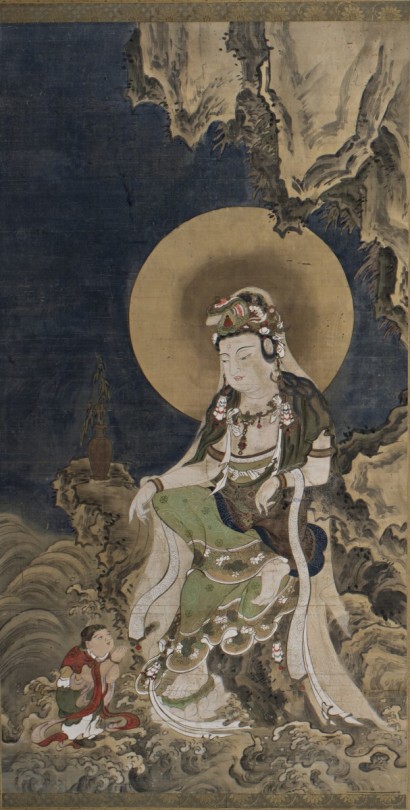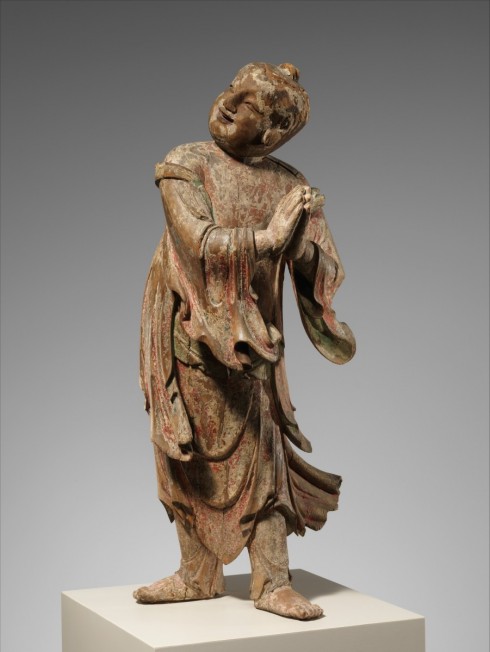Japan, Edo period, 1615–1868; hanging scroll, ink and color on silk; image: 61 7/8 x 33 in., mount: 87 7/8 x 39 1/2 in.; The Frances Lehman Loeb Art Center, Vassar College, Gift of Daniele Selby ’13, 2014.20.1.
Pilgrim Sudhana
China, Ming dynasty, late 15th–early 17th century; wood (linden) with pigment, lacquer, and gilding; single woodblock construction; 27 1/2 x 12 in.; The Metropolitan Museum of Art, Gift of Abby Aldrich Rockefeller, 1942, 42.25.6, photo: www.metmuseum.org.
This endearing Chinese sculpture depicts the archetypal Buddhist pilgrim, Sudhana. As in the scroll on the left, the youth looks up reverently with focused attention. In its original context, the statue most likely gazed at a larger depiction of Avalokiteshvara; Sudhana often accompanies him in sculptural ensembles. The Avatamsaka Sutra tells of the boy pilgrim’s journey to receive teachings from many enlightened figures; he finds Avalokiteshvara on the bodhisattva’s island paradise, Potalaka.





